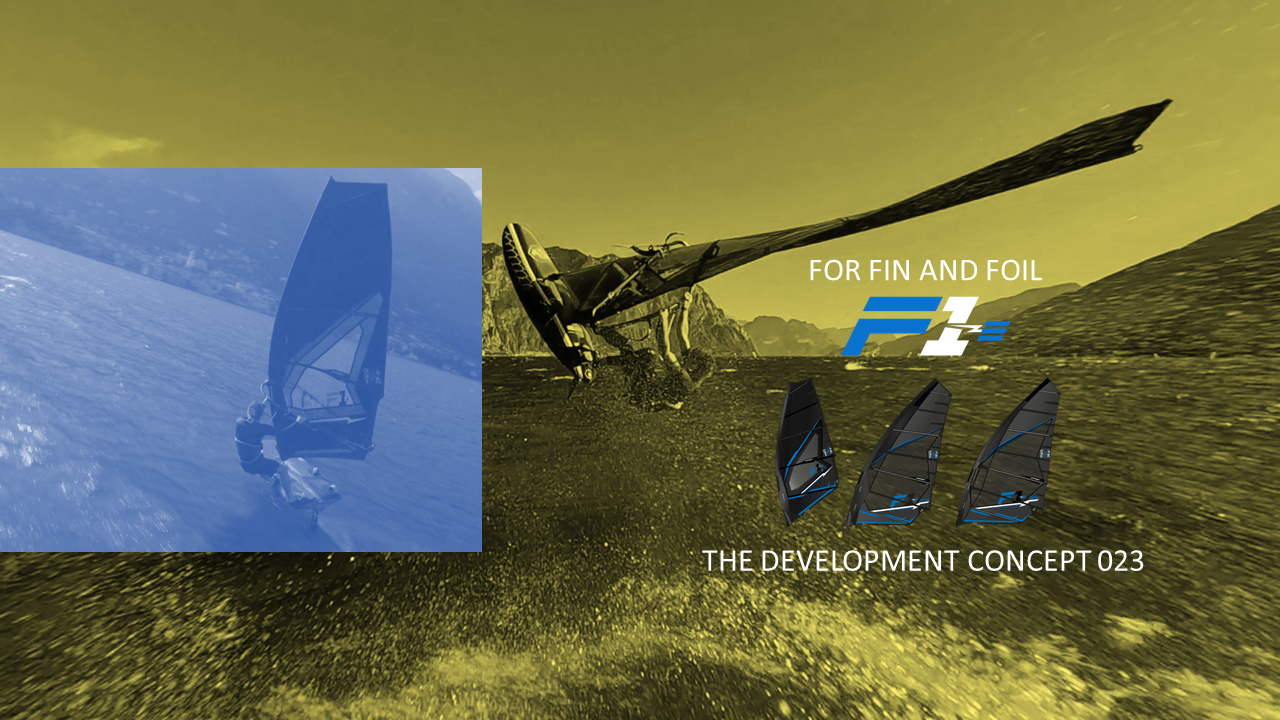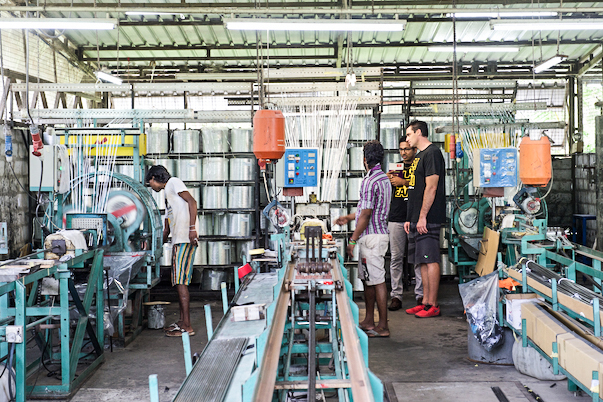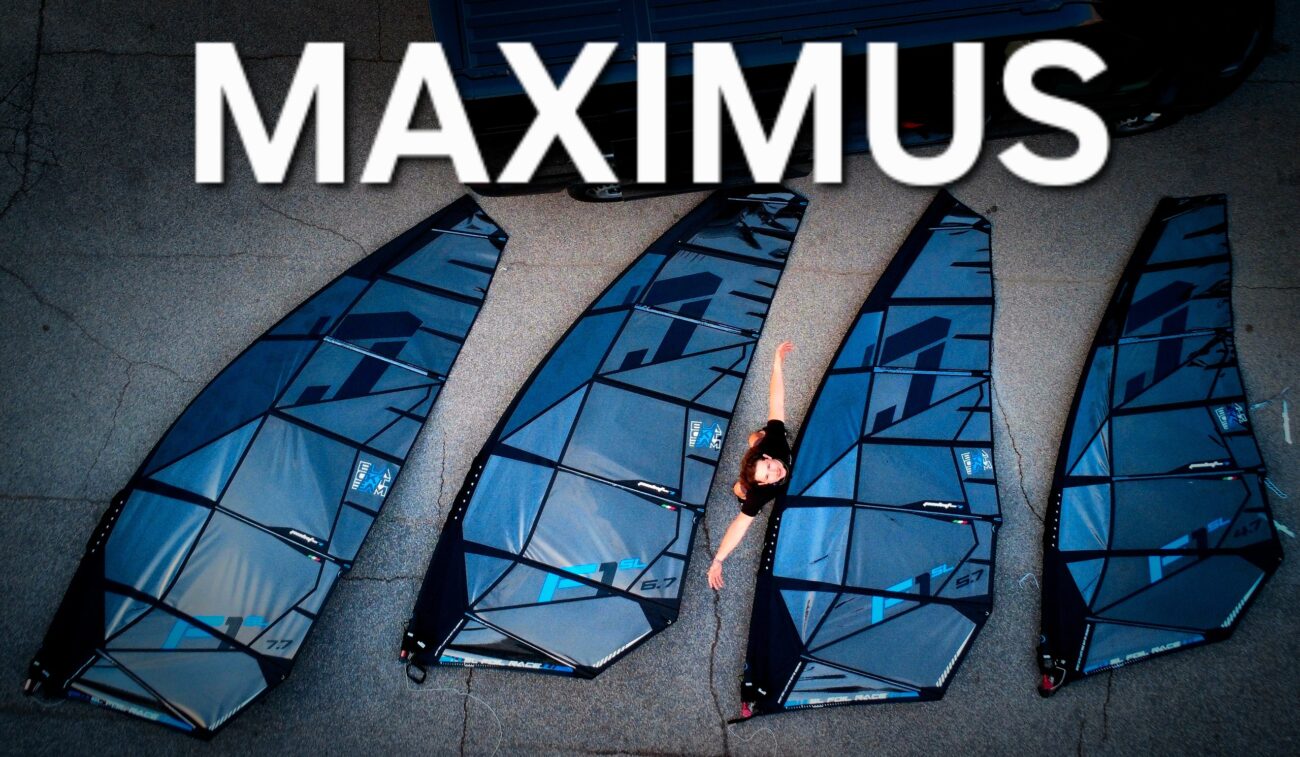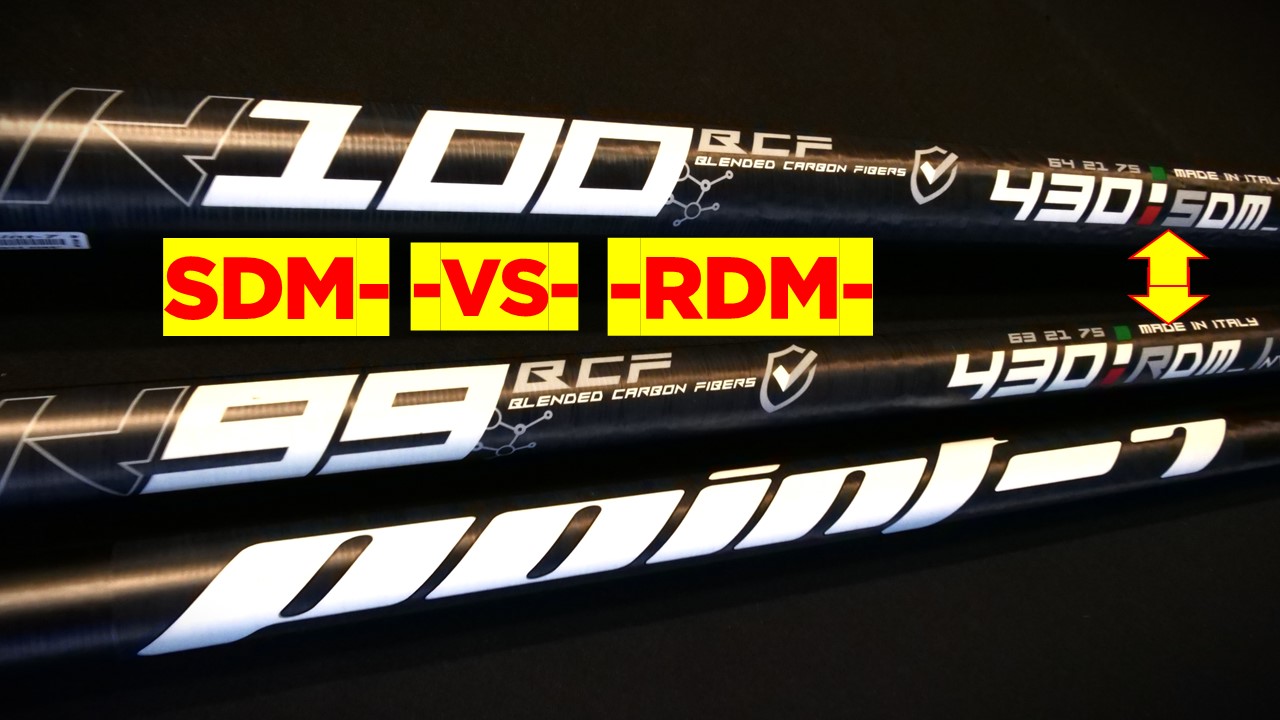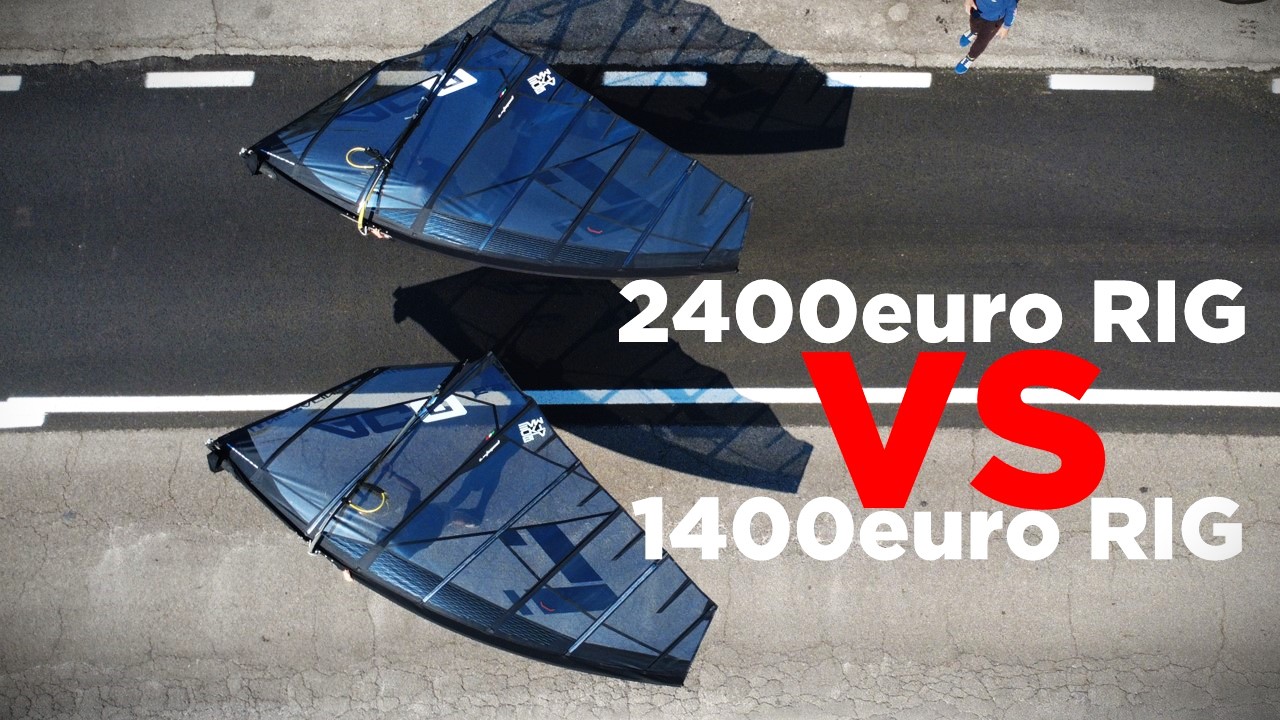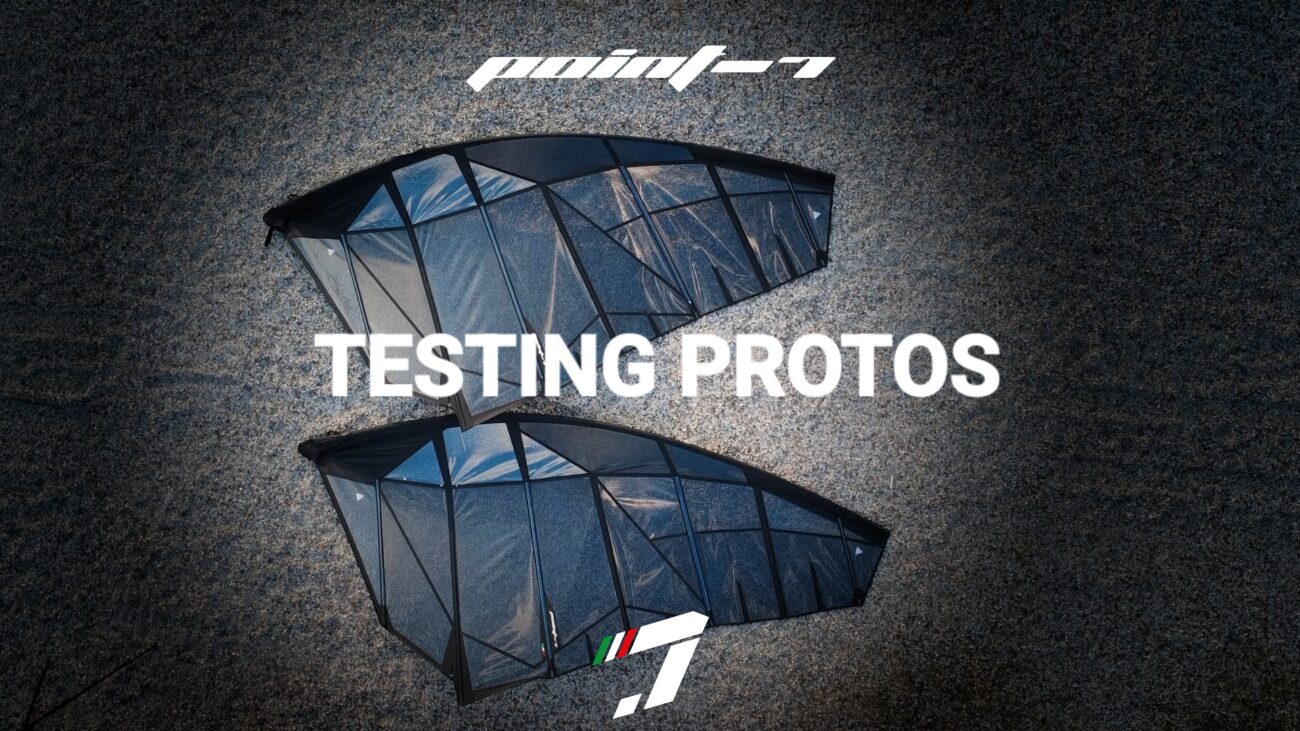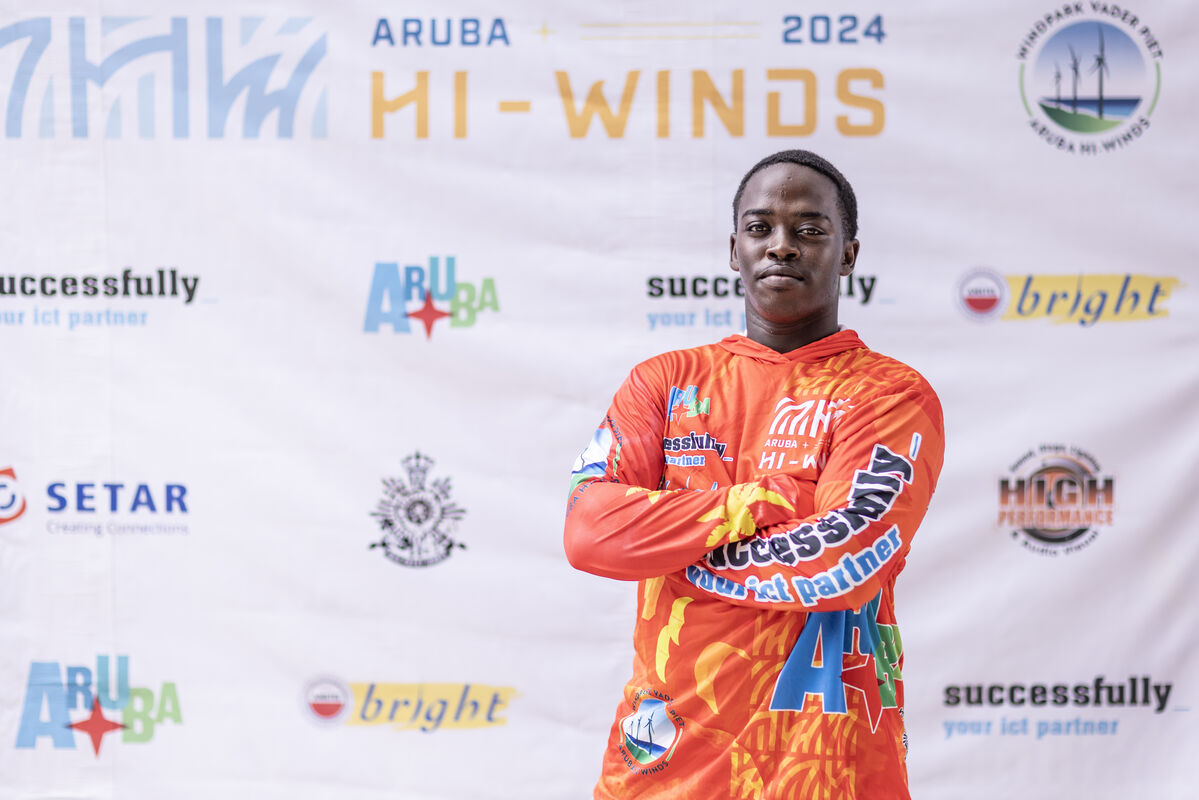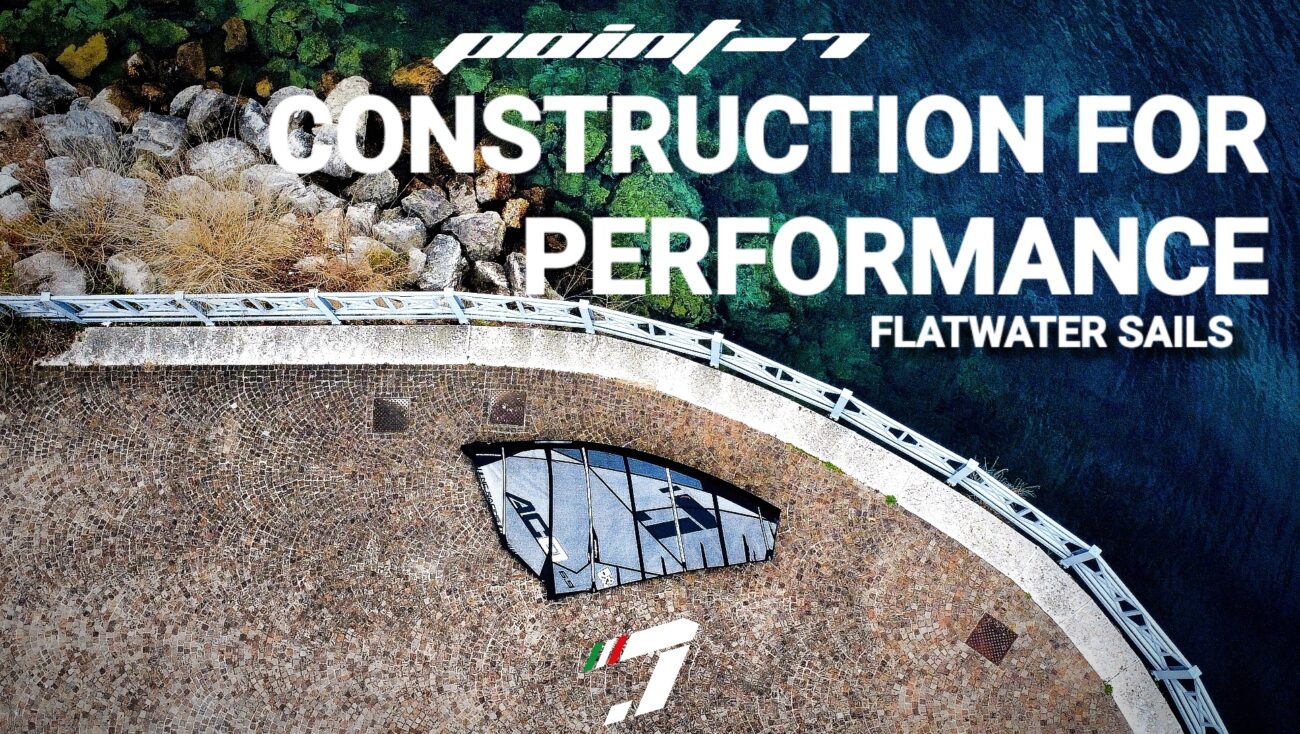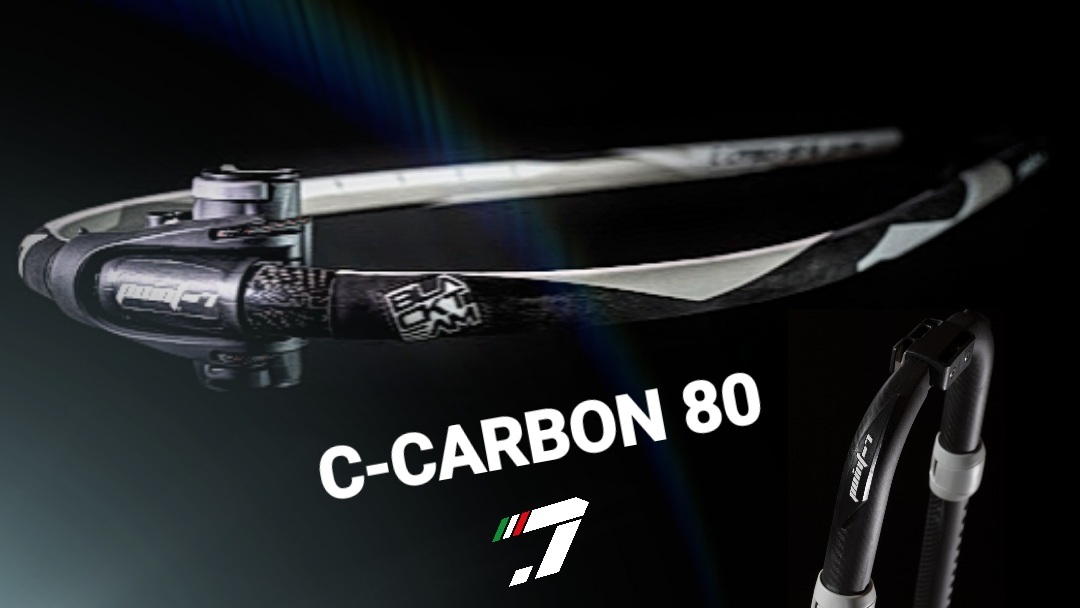Developing the F1e.
We were hearing how many windsurfers were complaining on how complicated it would be to have only specific gear for foiling for light wind and having therefore to purchase extra equipment, or just having extra equipment in the car. We also were noticing how many were using their normal windsurfing gear by just adding a foil and still having fun in light wind.
We thought that we needed to create a rig able to do both fin and foil. After having learned to develop a pure foil sail, we realized that to make a sail that would work on a fin and on a foil, would have not been that easy.
A foil sail needs a flatter profile, little loose leach, and a short boom. A fin sail is exactly the opposite. A longer boom helps to push the board in light wind condition, the lose leach to control and have stability for the gear over the water, a deeper profile to stability and power as wind increases

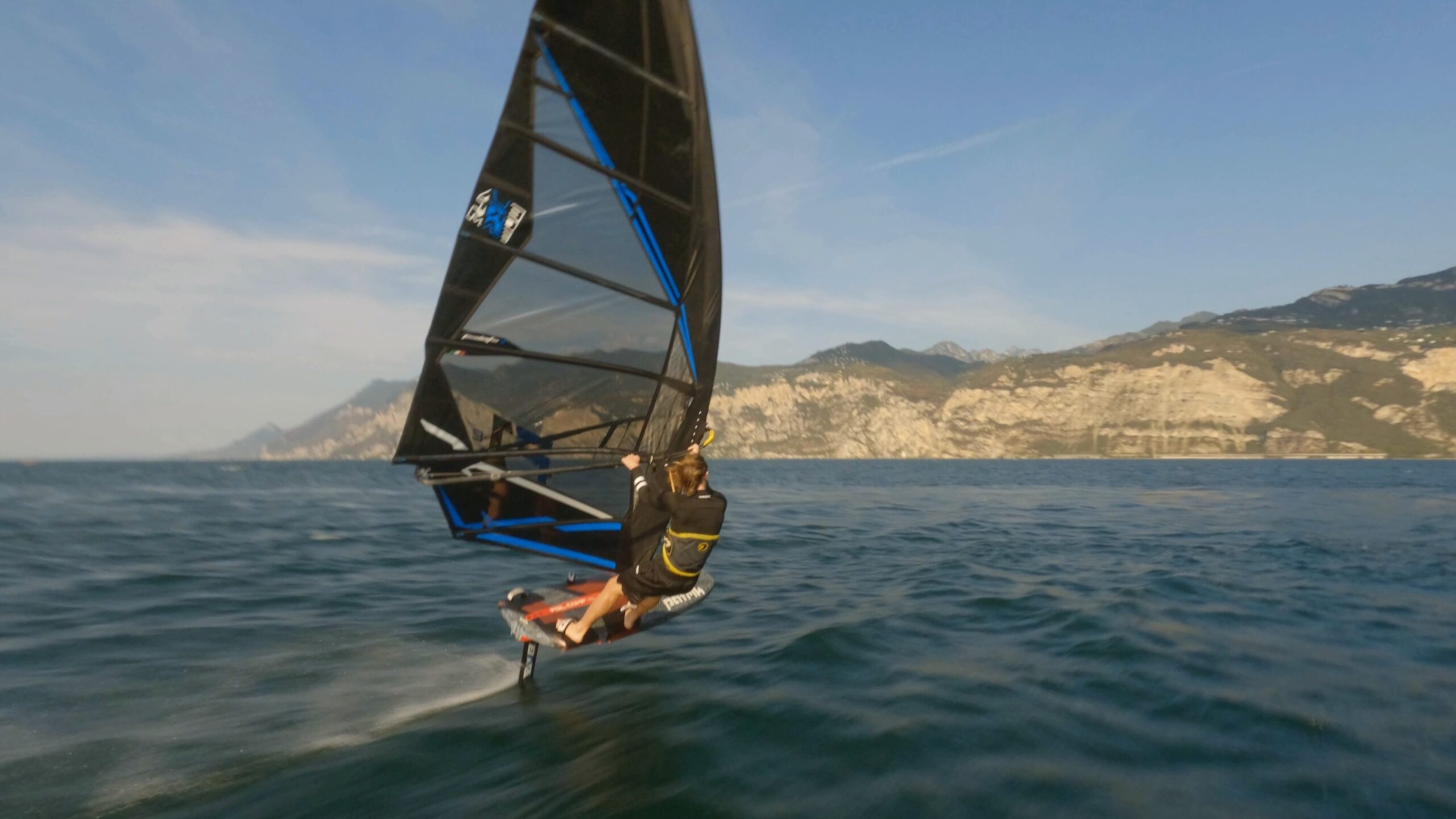
How to combine the two different worlds?
The idea of the F1e had a very precise target. It goes to a windsurfing public that wants to foil in light, therefore having a sail to foil till the wind becomes fun to go on the fin, and without changing the sail, but just by taking out the foil and inserting the fin, the game is on!
Translated a sail to plane on the foil from marginal breeze till 14\15 knots and from 14\15 knots able to push into plane a board on a fin till 22 knots. Exactly one sail for 6-22 knots!
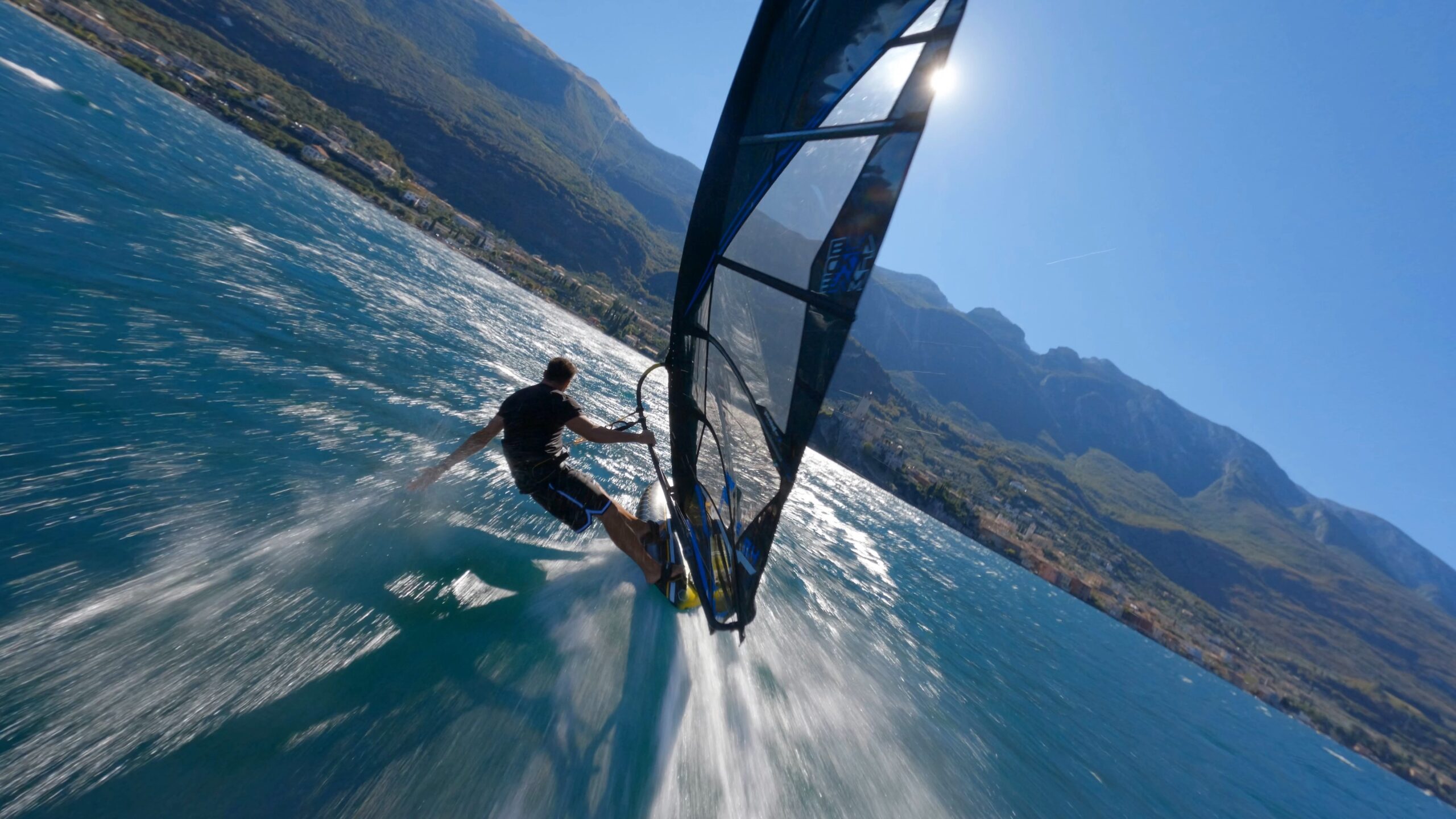
How to achieve this? The first thought is that the sail needed less power than a normal fin sail, as it would be used from 15knots up, and not from 11-12 knots. So, this gave the chance to bring the outline to a compromise between a high aspect foil sail to a lower aspect fin sail. A foil sail gains a lot of advantage on the foil against a fin sail as the wind increases. The back hand a fin sail gives, disturbs completely on a foil as the sail is getting overpowered. In this case our Hybrid sail would be used only up to 15 knots and not to 18-20 knots, as in that wind it would be used on a fin. So just by reducing a bit the back profile of the sail and the batten curve profile percentages, we reduced the back hand of the sail. Just as you would pull the outhaul when it starts to get a bit windy on a fin sail over 15 knots.
The result is that the sail feels amazing on the foil under 15 knots and on that fin over that wind. Taking a specific fin or foil sail and using it on a fin or on a foil board accordingly the wind range only on the fin or only on the foil, will be bigger, but in both cases, they won’t have a wind range and performance as our hybrid sails in 7-22 knots when using both fin and foil.
is the right sail.
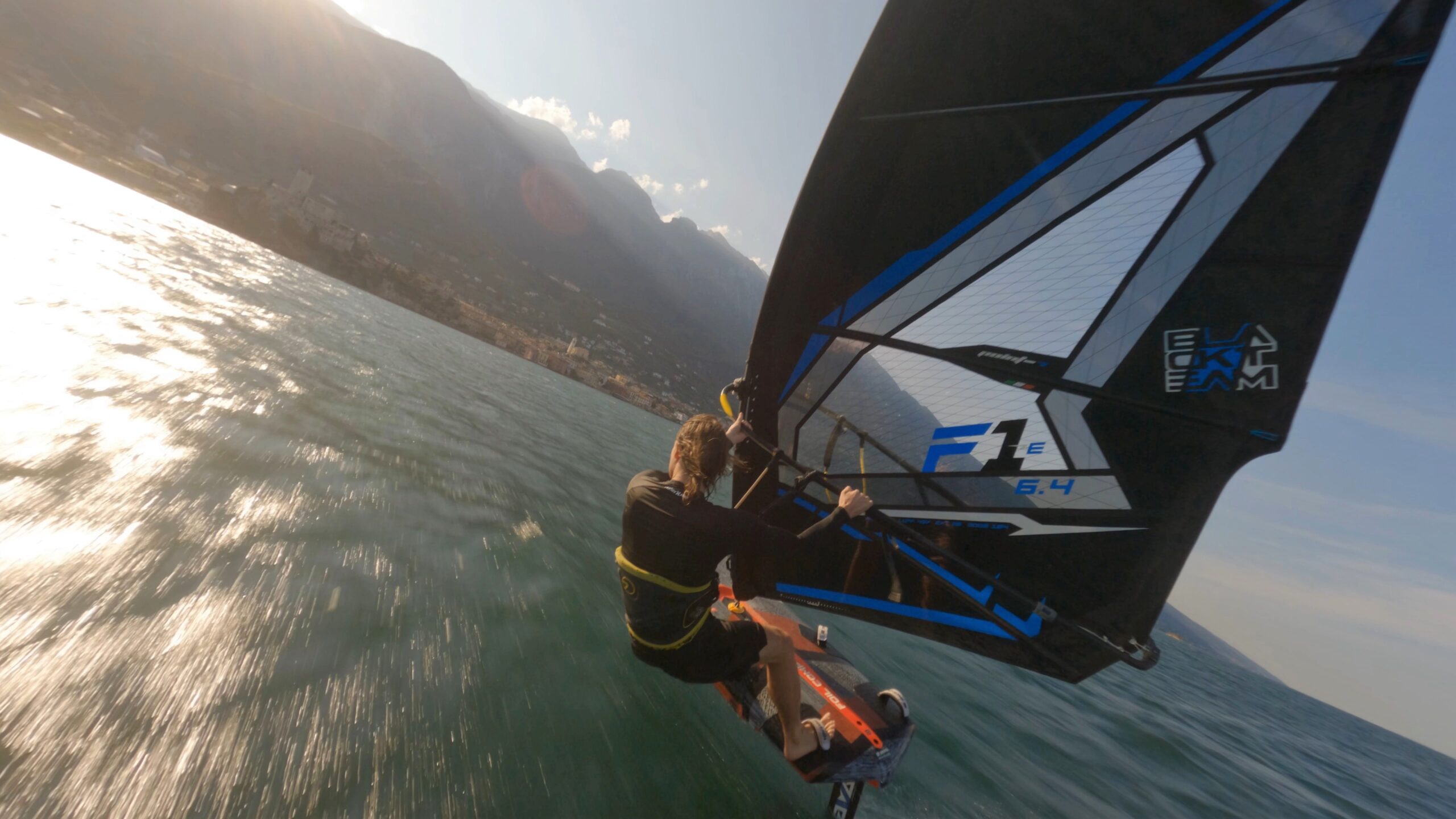
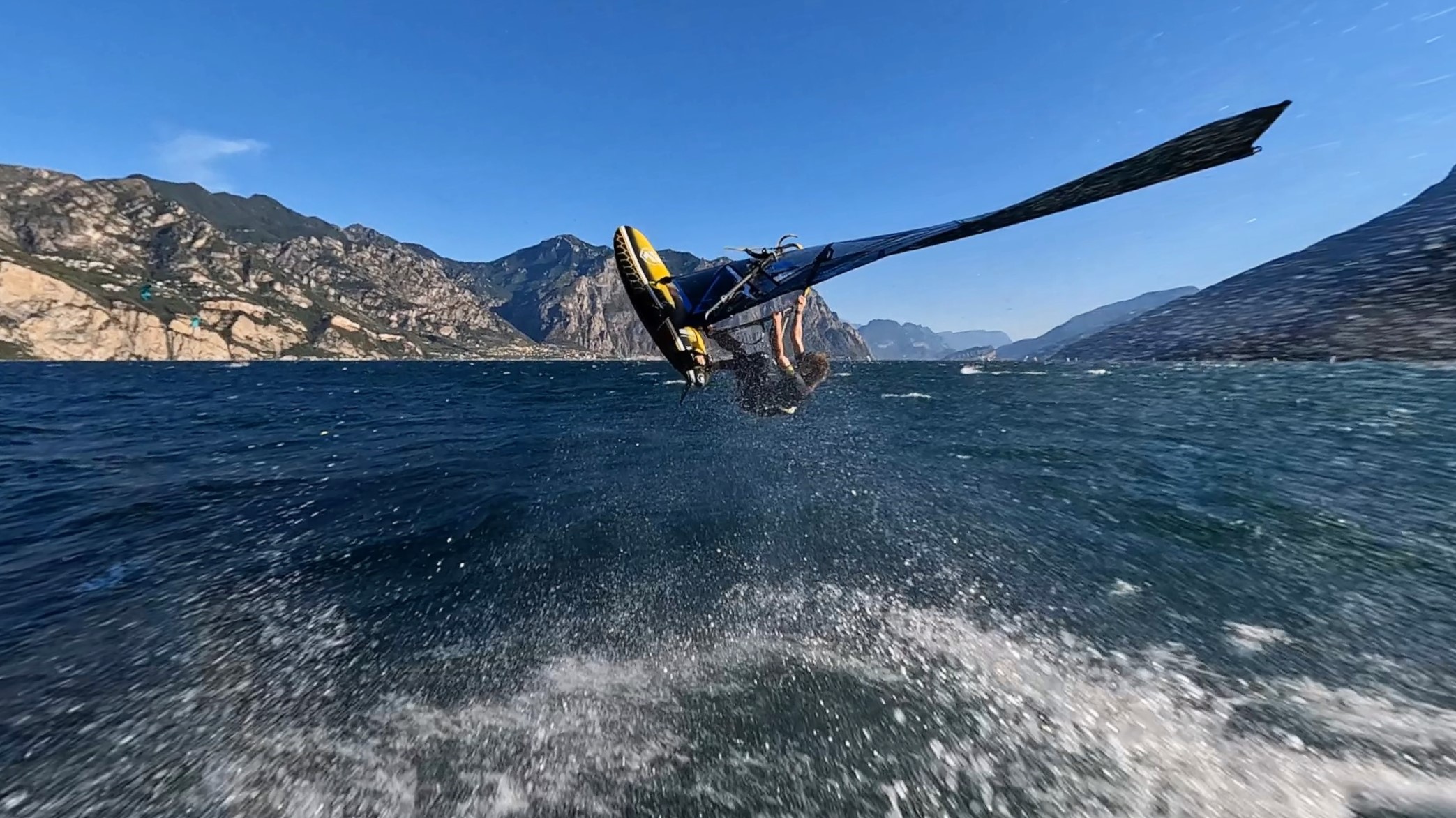
Four sizes with distinct set ups.
You may see four sizes, but the truth is that they are all made for 7-22 knots.
They are divided in two categories. Slalom & Bump and Jump

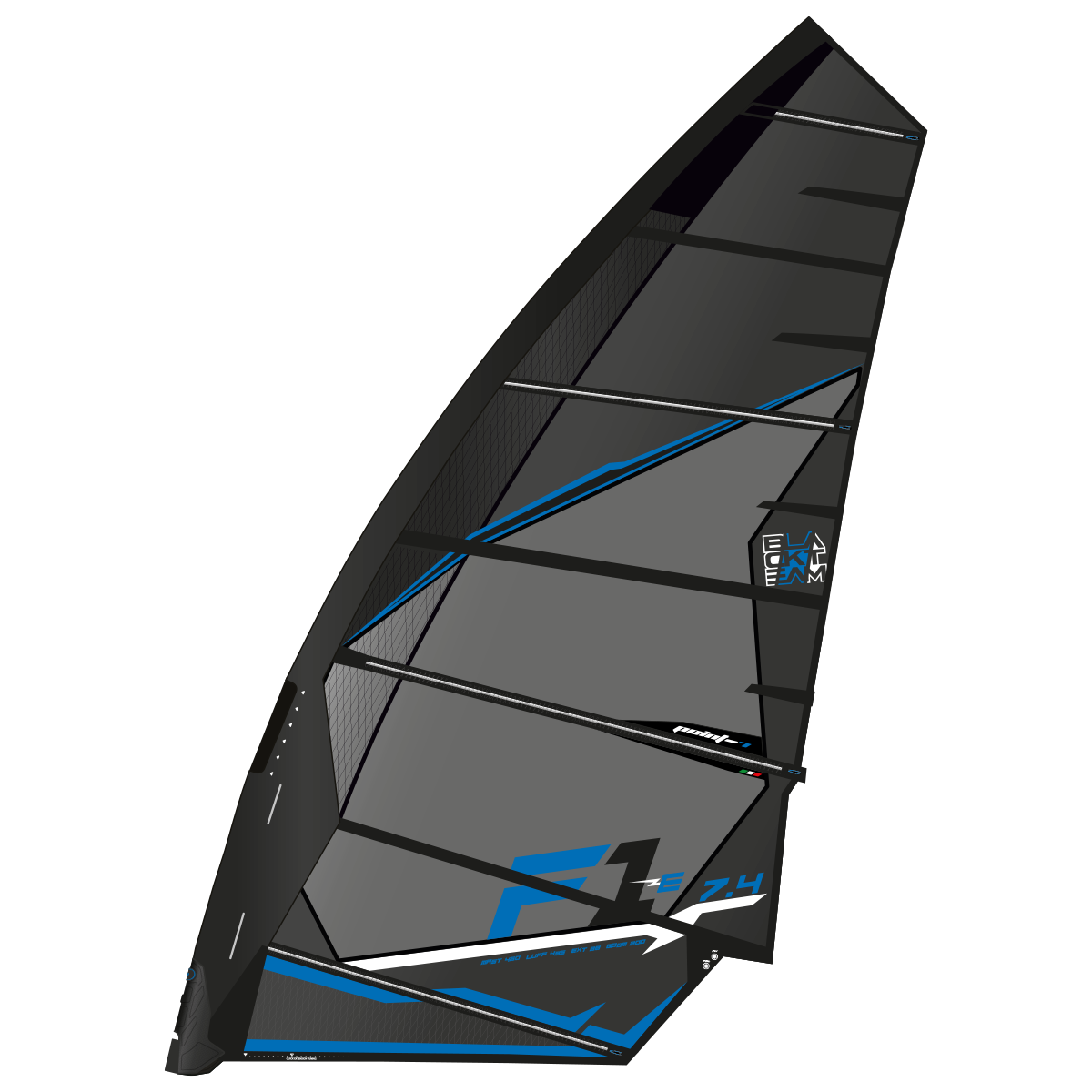
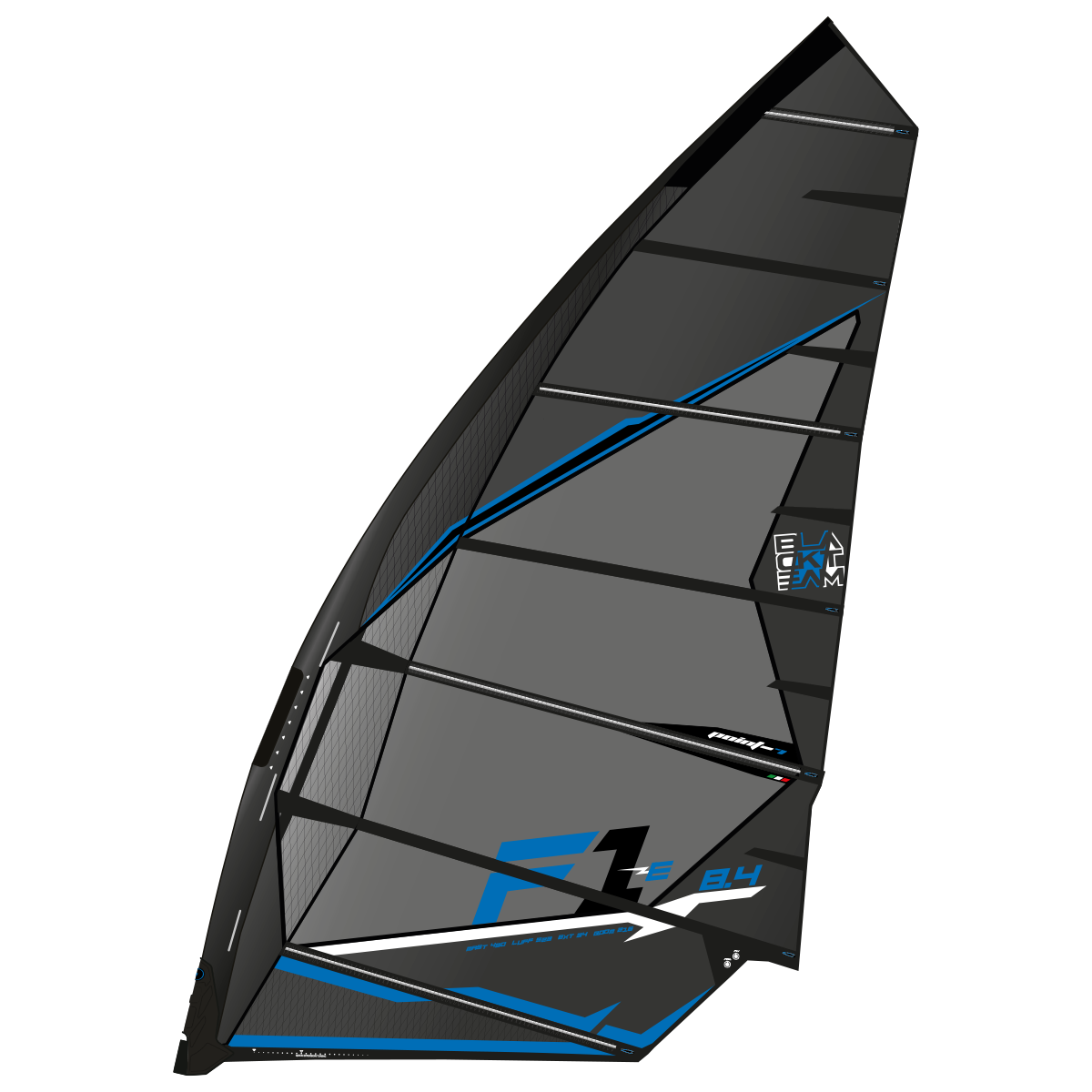
The slalom sizes are 7.4 and 8.4: 7.4 size is advice for those who are under 80kg and the 8.4 for those above. It fits slalom and free race boards, fins, and foils. For those who want to simply blast on their foil and fin with easier equipment than full racing sails.
The bump and jump sizes are 5.4 and 6.4: 5.4 size is advice for those who are under 80kg and the 6.4 for those above. It fits freeride, free wave, free foil boards. You can also use them for wave sailing in less radical conditions. The foil to use can be from free race to freeride and beginner foils. On the foil the balance amazingly the power feeling super light and easy. You can do from some maneuvers on the foil, or simple cruising. When on the fin, depending on the board, they can blast a high speed thanks to the low cam and wider sleeve below the boom, bump and jump over waves, and try it on the waves and be surprised!


